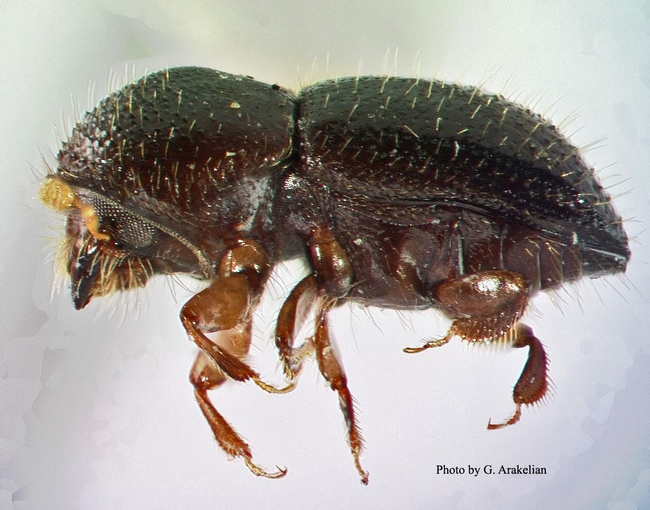While the Asian citrus psyllid/HLB pest-disease complex has received a lot of press lately, another deadly pest-disease combination has been found in Los Angeles County.
Tea Shot Hole Borer (Euwallacea fornicatus) is a vector for the Fusarium fungus. A native from Asia, this beetle is very small. Females are between 1.8 to 2.5mm (0.07-0.1 inch) long. Males are even smaller at 1.5mm (0.05 inch).
In addition to avocado trees, this insect is a serious pest of tea in Sri Lanka and India. In California, The Tea Shot Hole Borer was first reported on black locust (Robinia pseudoacacia), Lychee (Litchi chinensis), Box elder (Acer negundo), but there were no reports of fungal damage.
What to do:
- Look for a single exit hole with surrounding white powdery exudate.
- Scrape off the bark layer around the infected area to see the canker.
- Follow the gallery to look for the beetle (may or may not be present).
- Avoid movement of infested avocado wood out of infested area.
- Look for other hosts (Castor beans plant, Black locust, Lychee, and Acer) showing symptoms of the beetle/disease.
- Because the beetle tends to colonize both live and new dead wood, chip the dead wood within the grove and cover with a tarp for at least a week to prevent further beetle colonization.
- Sterilize tools to prevent spread of the disease with either 25% household bleach, Lysol (add symbol) cleaning solution, or 70% ethyl alcohol.
For more information please see the Fusarium dieback on California Avocado trees vectored by the Tea Shot Hole Borer Pest Alert developed by researchers at UC Riverside. The flyer is available in English and in Spanish.
